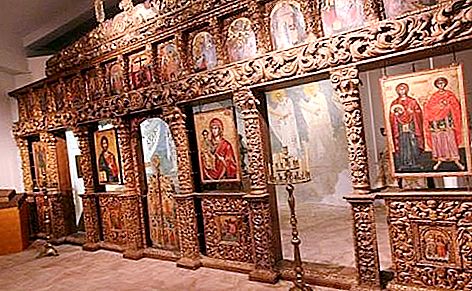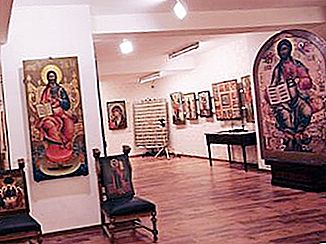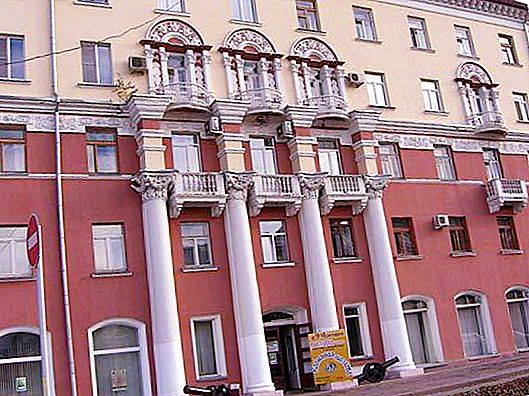The history of Russian iconography has seven centuries. The names of the masters, whose creations have survived to this day, constitute the glory of Russian painting, as well as the images of Orthodox saints they created. Few museums can be proud of the fact that their expositions display original scripts of XII-XIX centuries, when most of the masterpieces of Russian icon painting were created. The private Museum of Russian Icon on Taganka, founded by businessman and philanthropist Mikhail Abramov, today has a fairly extensive exhibition - over four thousand copies are presented to the public in its exhibition halls, including 600 icons, the rest are body crosses and antiquities related to icon painting and Orthodoxy.
Russian icon painting as a reflection of culture
In which city of the Russian state the first private museum of the Russian icon appeared, no one dares say for certain - it could exist, but remain unknown to outsiders. Historians write about many private museums, highlighting the most significant of them, and whose statements are the most accurate - a moot point.
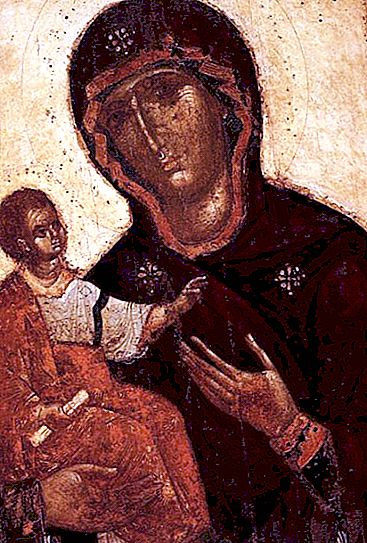
One can more reliably talk about the icon painters themselves, the years of their creations were established with amazing accuracy - from Theophanes the Greek to Fedor Zubov. They painted the most famous domestic churches, their works - the most priceless Orthodox icons. The Russian Museum - anyone who could boast of having among its exhibits a piece of the work of the great icon painters - could be considered incredibly rich. The surviving masterpieces are a true achievement of both national and world culture.
The Museum of Russian Icon, established by Mikhail Abramov, opened in Moscow on Goncharnaya Street, behind Kotelnicheskaya skyscraper in the Taganka district, not so long ago - in 2006, but today it is the largest private collection of icons in Russia. Initially, the collection was located in the Vereiskaya Plaza business center, on Slavyansky Boulevard, and occupied only a small area. You could get a sightseeing tour only by prior arrangement. Only after the opening of a new building on Taganka did everyone gain access to the private collection of icons.
The first private icon collections in Russia
The most valuable rarities of the museum on Taganka: the icon of Our Lady of Hodegetria by Simon Ushakov - the only subscription icon of the master; the image of St. Nicholas of Myra; a unique collection of Pskov icon painters of the 16th century.
The first private archives of iconographic monuments began to appear in Russia in the first half of the 19th century. The most famous of them were collected by M. Pogodin and P. Korobanov. But the true art of painting, the icon began to be considered only in the twentieth century. At the same time, collector N. Likhachev, who owned the most extensive collection of works of Russian icon painters in St. Petersburg, opened the first private museum of Russian icons available to the public. In Moscow, such galleries opened their doors to houses owned by the artist I. Ostroukhov and the merchant S. Ryabushinsky. It was not long before the revolution.
Modern private expositions of ancient icon painting
It can be safely stated that the first founder of the modern private museum of Russian icon was collector E. Roizman from Yekaterinburg. His collection of late Old Believer icon painting, reflecting the culture of the 18th-19th centuries, became available to the general public in 1999, when the significant opening of the Nevyansk Icon Museum took place.
In Moscow, for true connoisseurs of Orthodox painting, the doors of two private collections of icons are open at once. In addition to the collection of Mikhail Abramov, for several years in Moscow the Museum "House of Icon and Painting named after S.P. Ryabushinsky ”on Spiridonovka. Among his exhibits are genuine masterpieces. These include the icon of Our Lady of Hodegetria of the Georgian work of the 15th century, the icon of Nicholas the Wonderworker, painted in the first half of the 16th century, and a dozen creations of icon painters of Russia of the late period, which make up the true glory of Russian painting. Today, the Museum of Russian Icons on Spiridonovka has an exposition that has more than two and a half thousand icons.
Stages of the foundation of the museum on Taganka
Mikhail Abramov acquired old icons in his collection both in Russian and foreign private galleries. At his expense, everything was bought that could be found standing in antique salons. True, the bulk of the exhibits came from several private collections, the largest of which were in Moscow and St. Petersburg. Thus, the Museum of Russian Icon was replenished with masterpieces stored in the personal collections of three Moscow artists - S. Vorobyov, V. Momot and A. Kokorin.
In 2007, in Burn, Mikhail Abramov officially acquired and legally imported into Russia 10 icons stolen in 1984 from the Veliky Ustyug State Historical, Architectural and Art Museum-Reserve (Church of Dmitry Solunsky, Dymkovo Village). Of course, the acquirer did not even realize the difficult fate of these icons painted in the 16th-17th centuries on Kostroma lands. They were not wanted, as there were no photographic images of them. Only after examination at the State Research Institute of Restoration did we manage to find out the history of these icons. Of course, Mikhail Abramov transferred them to the state depository. In 2008, in the Tretyakov Gallery, these icons were shown to visitors at the “Returned Property” exhibition.
But the experts of the Abramov Museum once revealed among the acquired exhibits a shrine stolen once in Rostov - a carved cross. He was immediately returned to the state. Mikhail Abramov himself is consciously engaged in the purchase of Russian icons abroad, exerting all his efforts to return valuable exhibits of her great history to her homeland.
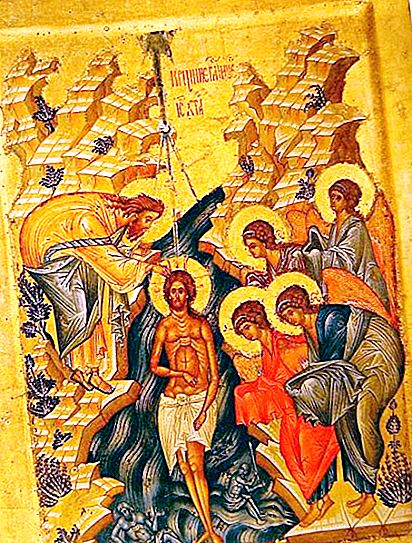
Priceless museum exhibits on Taganka
Icons of the level of Rublev or Dionysius, of course, are not here - the bulk are works of the XVI - early XX century. The work of the masters of the Armory is well represented. Some icons delight the heart with their touching provincialism: Rostov, Vologda, Obonezhie, Tver, Kargopol, Solikamsk, Volga - these are just some of the places where these exhibits come from. Those who like to solve iconography will like the boards of the 18th-19th centuries: large museums usually neglect such “late” images, but they are extremely curious.
The acquisition by Abramov in 2007 of a collection of icons, previously owned by the famous Leningrad collector V. Samsonov, was an important event for the patron. The Museum of Russian Icon on Goncharnaya was replenished with genuine masterpieces of domestic icon painting - the image of Our Lady of Hodegetria, painted by Simon Ushakov himself, and several icons of a later period by lesser-known artists, but who did not lose their true historical and cultural value. Even the acquisition of the collection is intriguing.
Samsonov dreamed of opening an icon-painting museum in his native city, the true pearl of which would be his own collection, but these dreams were not destined to come true. After the death of the collector, some of the exhibits were confused by his unworthy heirs, and the remains were taken to one of the temples, where they were stored in complete negligence. It was bought by Mikhail Abramov, thereby not only replenishing the exposition of his own museum, but also devoting it to the blessed memory of the first owner.
How the true value of exhibits is determined in a museum
Carried away by collecting icons, Abramov struck up close relations with connoisseurs of ancient Russian art, specialists from the Tretyakov Gallery and the Russian Museum. Not a single exhibit passes by examination; this helps to maintain a high historical and cultural level of the collection. In addition, if you manage to acquire a very valuable exhibit, it is checked at least twice for confirmation of a non-criminal past. The Ministry of Culture, to which it passed from Rosokhrankultura, has a base of stolen values - all ancient objects are checked against this base.
To ensure that no acquisition could cast a shadow on the noble beginning of the mission that the patron Abramov leads, the director of the Museum of the Russian Icon Nikolai Zadorozhny strictly follows. Under his leadership a unique Old Believer chapel of the 19th century was found and equipped in the museum, which was practically destroyed in the forest of the Tver region. The chapel was carefully dismantled literally by logs, taken to the museum workshop and recreated almost in its original form, where the images of the icons were arranged in the proper order, and the service books were opened as if for prayer, and only candles lit up the whole room. Visitors can enter it only by bending over.
A bit about expositions
In the summer of 2014, a new exposition opened at the Abramov Museum, under which the entire fourth floor of the building was taken. It is dedicated to the iconography of the XIX-XX centuries. All the variety of late Russian paintings from rubella and chromolithographs to monumental temple icons are presented to the general public. You can also admire the strictly canonical Old Believer icons painted in the so-called "centers of ancient piety", which were located in Tver, Vetka, Moscow, Moscow Region and the Urals. A vast part of the exposition was reserved for acquaintance with the art of book writing of those years.
There are four exhibition floors in the museum; the entrances to them are imitated under safe doors. Behind one of them is a reconstructed Old Believer chapel of the 19th century with cast and carved Old Believer crosses, icons, the Gospel. The lobby displays the remains of an old iconostasis. Even the buffet has objects of antiquity - Old Russian painted spinning wheels are hung on its walls. One of the exhibition halls is equipped with an Ethiopian Orthodox church.
Lectures, demonstrations and field trips
Stationary excursions in the museum are held six days a week, with the exception of Wednesday. The theme of these excursions differs little from ordinary museum ones. In addition to an overview of the collection of icons, you can visit such as “Russian iconography of the XIV-XVI centuries” and “Russian iconography of the XIX-early XX centuries. Basic styles, leading centers and craftsmen. ” But special excursions deserve special attention, one of which is “The World of the Russian Skete: the culture of the Old Believers”, developed by E.B. Solodovnikova, is in the greatest demand among visitors.
Quite often, the museum holds lectures and theme nights. Concerts are organized - a piano is set up in the lobby for these purposes. In order for everyone to not only see priceless exhibits, but also listen to a series of lectures on the cultural traditions of ancient Russia, a conference room is equipped in the museum, a specialized library fund is going to be located, in which you can find everything about the history of the creation of the Orthodox icon. The Russian Museum of Abramov is also widely known abroad, thanks to its rich exposure and generosity - visitors to the museum can admire its exhibits completely free of charge - everything is paid by its founder Mikhail Abramov. This circumstance fundamentally distinguishes the private Museum of Russian Icon from state galleries.

State museums of both capitals
The main monuments of fine art of the Russian state are kept in the Tretyakov Gallery and the Hermitage. But two more museums in Moscow and St. Petersburg should be remembered, since they are directly related to the great heritage of Russian icon painting, and among their exhibits are the most famous icons of ancient masters. One of them is the State Russian Museum. Icons among its exhibits occupy a prominent place, but not dominant. The museum is located in the Northern capital.
The Museum of Old Russian Culture and Art named after Andrei Rublev, located in Moscow, is no less relevant to Russian icon painting. Founded in 1947, it has a rich exhibition and is the main repository of the great domestic heritage of fine art. The museum displays one of the most revered Christian icons of the "Virgin of Our Lady" painted by Rublev in 1409.
Orthodox churches - living icon-painting museums
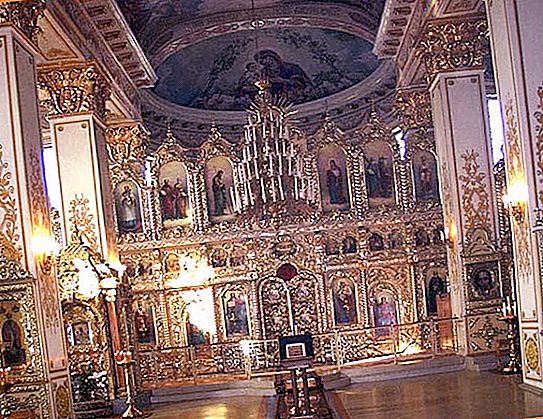
How many Orthodox churches throughout the country can not be counted, and there are icons in each. Of course, most of the temples and the shrines in them have only relative value, more for study by artists, not historians. Those churches that have true masterpieces in every way protect their values for several dozens of permanent parishioners, but will never agree to transfer them to museums where thousands of ancient art lovers could see them. It is impossible to reproach priests in the absence of patriotism - the temples entrusted to them need these icons. The Russian Museum, even the smallest, has several priceless exhibits, but not every church can boast even one icon of great historical and cultural significance. Although, if it is fair to reason, why were they written, if not in order to serve the congregation as an inspiration for prayers?
The importance of ancient icons for modern Orthodox believers
Of course, museum exhibits, even if they are Orthodox icons, have little to awaken in the hearts of the true faith. It is sad to admit, but nevertheless they have more museum value - the atmosphere of the exhibition erects a wall between the admiration for art and the delight of feeling the presence of the Holy Spirit. Abramov, who created the Museum of the Russian Icon, can break this trend, but so far his project has not managed to avoid this bleak fate, although the interior of some halls is as close as possible to the temple ones. Nevertheless, to see the holy images before which our ancestors knelt was the greatest happiness for every Orthodox Christian. This happiness is given to people by the Museum of Russian Icon. Moscow was enriched by another monument of ancient culture.
It is also encouraging that the founder of the museum tried to bring not only the interior decoration of the premises to the church, but also carefully worked on the external ensemble of the complex - opposite the Museum of Russian Icon is the Athos Russian Holy Panteleimon Monastery. The choice of location was perfect.


